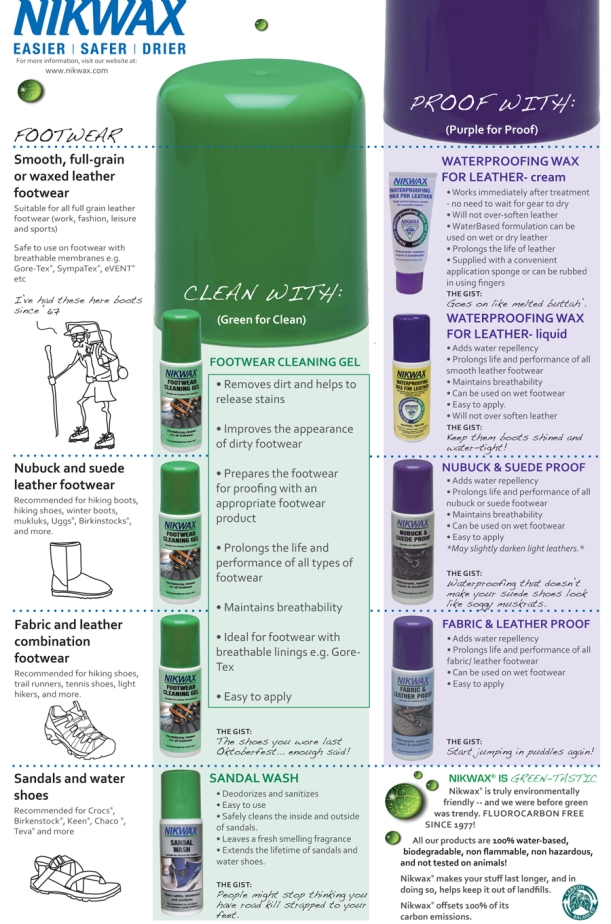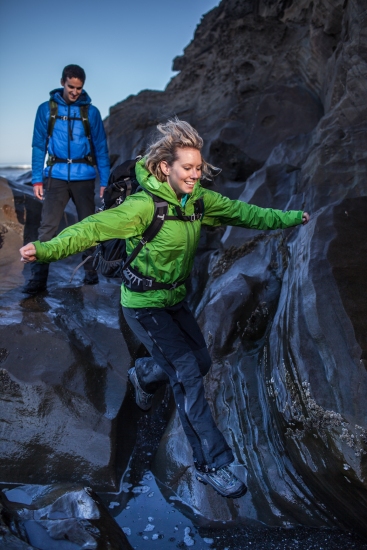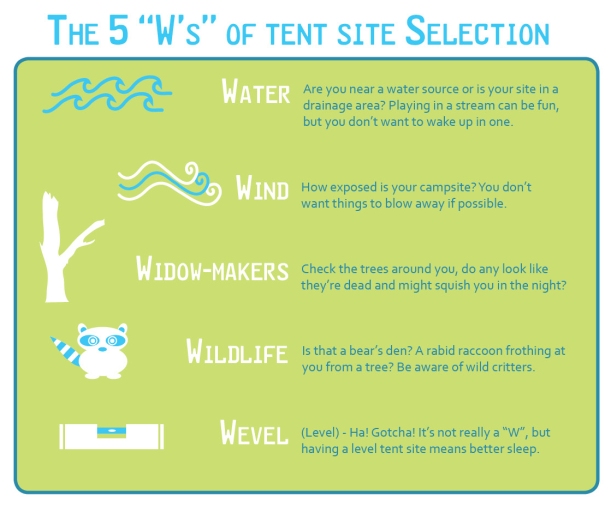Dear Professor Nikwax,
My summer plans have me climbing several peaks, riding my bike along the California coast, and wearing my sandals to the Farmer’s Market. Of course I’ll also be logging a lot of time in the office. I’ve invested in some good shoes for the different sports, but I want to take care of them so they last through the season and beyond. Help!
-Wanderluster
…………………………………………………………………………………………..
Dear Wanderluster,
Your instincts are correct; even the highest-quality footwear needs regular cleaning and conditioning to last.
Congratulations on taking the time to learn about the best steps for caring for your kicks.
I’ve put together a handy chart to remind you about what to do for different shoes and when. Print it out and hang it in your gear closet!
Then, read on for a break down by sport.
Hiking/mountain climbing
As you know, stable boots or hiking shoes with lateral support, excellent tread, and waterproofing are priority number one when you’re heading to the high country.
Leather: Before you do anything, clean ‘em with Nikwax Footwear Cleaning Gel. This gets rid of the dirt and establishes a clean slate for the next step: waterproofing.
Are they pretty beat up? Treat them with Conditioner for Leather, which is absorbed into the leather and helps keep the material supple.
Then, even if your boots come with a waterproof membrane like Gore-Tex, waterproof them. We’ve got both a wax and liquid waterproofing product, and both can go directly onto wet leather. So sit down, clean, waterproof, and leave to dry.
Finally, send me a picture from one of the peaks you climb this summer.
Fabric and leather combo: Whether we’re talking about your ultra light trail runners or your low-top hiking shoes (which is what I use in all but the most epic mountaineering adventures), this leather and fabric combo needs to be cleaned with the Nikwax footwear cleaning gel and then treated with our Fabric & Leather Proof product. I guarantee this will add water repellency and keep your shoes in better condition, longer.
Biking
Until recently, I thought high-end, leather cycling shoes were the purview of professional cyclists. Then I got a pair. Wow. They’re comfortable, lightweight, and they make me feel powerful. I, like you, want to return the affection. So I use the same products on my leather biking shoes that I do for my leather hiking boots: clean, condition, waterproof.
Sandals
The worst thing about sandals is the stench. Sporty sandals with a rubber sole and technical fabric upper can collect stinky bacteria and, put simply, reek. Fortunately the Nikwax Sandal Wash deodorizes and sanitizes those bad boys.
Office/Daily wear
Are your office shoes nubuck or suede? Then treat them with the Nikwax Nubuck & Suede Proof waterproofing. Leather? See the instructions for leather footwear above.
I hope that answers your questions. Follow these tips and your shoes will last far beyond this summer.
Happy travels!
Best,
Professor Nikwax





